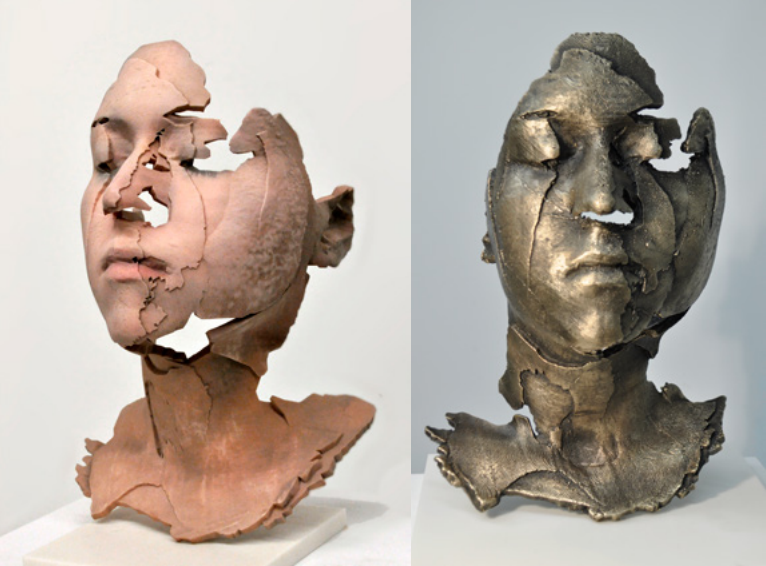3D Scans Can’t be Copyrighted – Shapeways Publishes New Whitepaper on 3D Scanning and Copyright Laws
 There is no question that as 3D scanning and 3D printing technology improves in both quality and speed, the future of copyright and IP law is going to get really complicated. Law firms all over the world are already putting together teams to study and refine what legal rights exist under current laws and prepare to defend and represent their clients’ ability to control all aspects of their intellectual properties. It goes without saying that the owners of IP’s are going to be quite motivated to ensure that any adjustments to copyright and trademark laws favor them, but even now the laws aren’t really designed to consider 3D scanning and 3D printing technology, and aren’t likely to hold up without being adjusted for very long.
There is no question that as 3D scanning and 3D printing technology improves in both quality and speed, the future of copyright and IP law is going to get really complicated. Law firms all over the world are already putting together teams to study and refine what legal rights exist under current laws and prepare to defend and represent their clients’ ability to control all aspects of their intellectual properties. It goes without saying that the owners of IP’s are going to be quite motivated to ensure that any adjustments to copyright and trademark laws favor them, but even now the laws aren’t really designed to consider 3D scanning and 3D printing technology, and aren’t likely to hold up without being adjusted for very long.
In order to help their community understand copyright laws and 3D scans as they exist now, 3D printing services bureau and marketplace Shapeways published a new whitepaper that takes a closer look at the issue. In “3D Scanning: A World Without Copyright,” Shapeways legal guru Michael Weinberg breaks down in what ways copyright protections do and do not exist for 3D scans, and what other legal ways they can be controlled and managed. Obviously for a company like Shapeways, whose business model is dependent in many ways on its users’ content, which is often dependent on 3D files, it is vital that they they effectively communicate to them what legal rights exist for them and their 3D scans.
3D scanning is rapidly becoming a significant ancillary industry to 3D printing, and a growing number of businesses are offering 3D scanning services. The most obvious and visible use is for the 3D scanning of individuals, either to be converted into digital assets for 3D printing or for use in other digital mediums like virtual reality. But those types of businesses actually represent a small number of uses for the technology, and aren’t really the primary source of most 3D scanning services. Industrial manufacturing and prototyping are using 3D scanners to capture digital versions of products for quick alterations or archival purposes in growing numbers, and those numbers will continue to rise as 3D scanning technology becomes cheaper and more accessible to a larger number of the population.
It is natural to assume that 3D scanning is a close analogue for photography, and still images, and by extension video, are often covered under current copyright laws. However, 3D scans differ from still images and video in a few specific areas and for the most part are not and cannot be protected under current copyright laws. In the United States, one of the primary requirements to obtain a copyright is originality, and a photograph, even a photograph of something that someone else owns a copyright on, is considered original work. You see, the photograph exists because the photographer either posed or framed the subject in a way that was original regardless of the subject’s copyright protection. It is capturing the essence of something, but it is not an exact duplication of it.
“It is also important to recognize that just because most 3D scans are beyond the scope of copyright does not mean that all 3D scans will be. Scans that do intentionally inject original, creative elements such as Geoffrey Mann’s Shine and Sophie Kahn’s portraits are likely to be eligible for copyright protection. And, of course, 3D scanning is relatively new and the law around it could evolve right along with the technology,” notes Weinberg in his Shapeways Blog post announcing the whitepaper.
While it wasn’t always considered an original work, it came to be understood in the legal definition of “original” that a photograph was its own, unique thing that is separate and distinct from whatever is being photographed. In contrast, the very nature of 3D scanning is an attempt to capture an exact reproduction of an object, which eliminates the criteria that mark a photograph as original. A 3D scan would be closer in legal terms to a photocopy than a photograph. Obviously you can’t hold a copyright on a photocopy, or by extension a 3D scan; however, that doesn’t mean that you don’t have certain legal options available to you that can control how a 3D scan that you produce is used.
As is usually the case in matters like these, the rights to a 3D scan end up being dependent on a legal contract that is made between the person or entity doing the 3D scanning, and the subject or owner of what is being 3D scanned. The contract could, for instance, say that the 3D scan can only be used by the subject and becomes their full property. Or it could also leave room for other terms of use, such as for self-promotion rights for the 3D scanner or simply making the 3D scan open source and free for everyone to use within a set of specific limitations, like for educational purposes.
The subject of copyrights and trademarks is incredibly complicated; there is a reason that it has its own unique and distinct type of attorney specialty. Weinberg specifically wrote the whitepaper for a casual audience, so it’s actually a nice read and pretty easy to understand, though it does focus on copyright laws from the US specifically. For a more European perspective on 3D scanning and copyright he suggests a paper by Professor Thomas Margoni. You can check out the Shapeways whitepaper here. Discuss further in the Shapeways & 3D Copyright Protection forum over at 3DPB.com.
Subscribe to Our Email Newsletter
Stay up-to-date on all the latest news from the 3D printing industry and receive information and offers from third party vendors.
You May Also Like
Gorilla Sports GE’s First 3D Printed Titanium Cast
How do you help a gorilla with a broken arm? Sounds like the start of a bad joke a zookeeper might tell, but it’s an actual dilemma recently faced by...
Nylon 3D Printed Parts Made More Functional with Coatings & Colors
Parts 3D printed from polyamide (PA, Nylon) 12 using powder bed fusion (PBF) are a mainstay in the additive manufacturing (AM) industry. While post-finishing processes have improved the porosity of...
$25M to Back Sintavia’s Largest Expansion of Metal 3D Printing Capacity Since 2019
Sintavia, the digital manufacturing company specializing in mission-critical parts for strategic sectors, announced a $25 million investment to increase its production capacity, the largest expansion to its operations since 2019....
Velo3D Initiates Public Offering in a Bid to Strengthen Financial Foundations and Drive Future Growth
Velo3D (NYSE: VLD) has been among a number of publicly traded 3D printing firms that have attempted to weather the current macroeconomic climate. After posting a challenging financial report for 2023,...


































